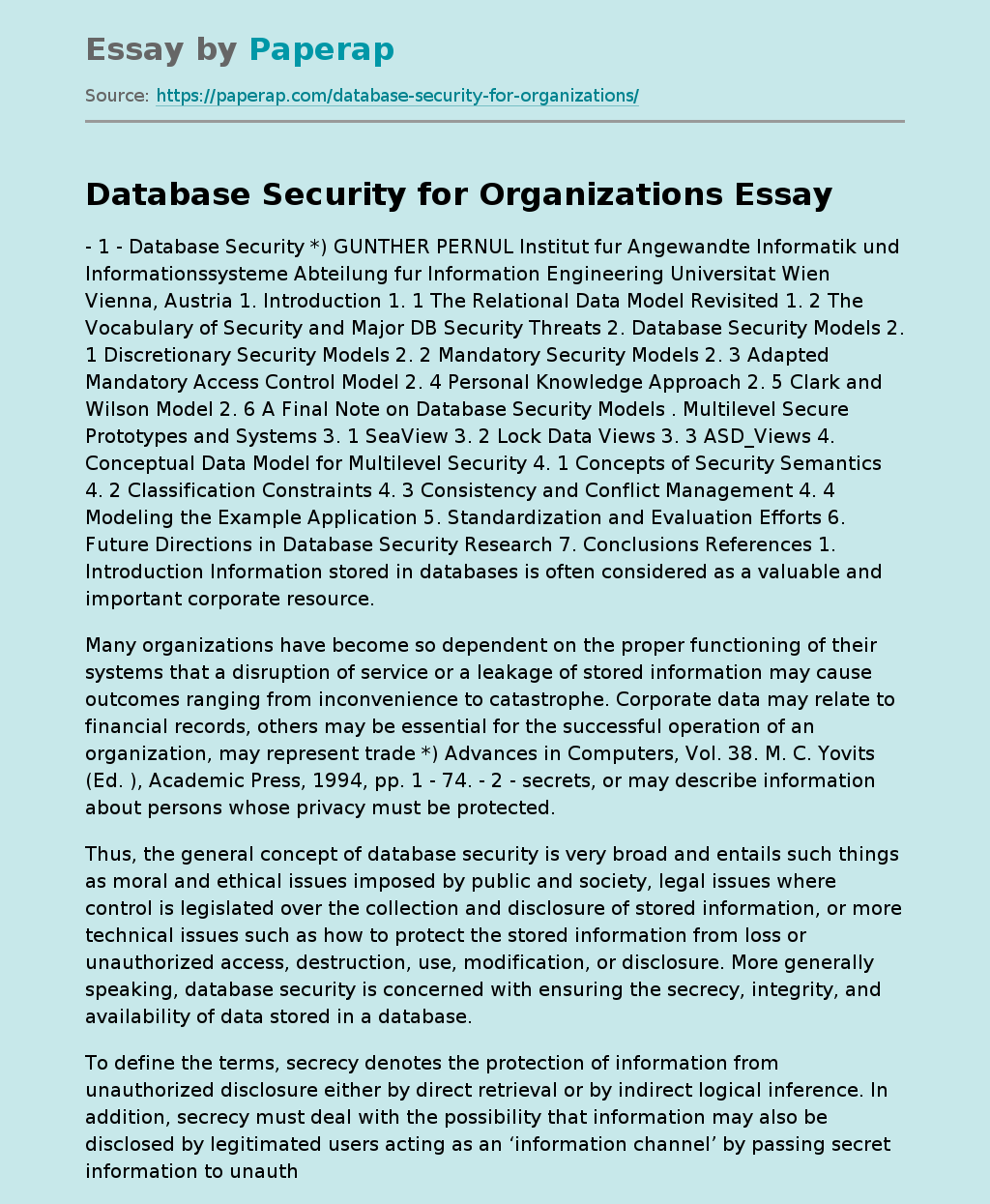Database Security for Organizations And Enterprises
Many organizations have become so dependent on the proper functioning of their systems that a disruption of service or a leakage of stored information may cause outcomes ranging from inconvenience to catastrophe. Corporate data may relate to financial records, others may be essential for the successful operation of an organization, may represent trade.
Thus, the general concept of database security is very broad and entails such things as moral and ethical issues imposed by public and society, legal issues where control is legislated over the collection and disclosure of stored information, or more technical issues such as how to protect the stored information from loss or unauthorized access, destruction, use, modification, or disclosure.
More generally speaking, database security is concerned with ensuring the secrecy, integrity, and availability of data stored in a database.
To define the terms, secrecy denotes the protection of information from unauthorized disclosure either by direct retrieval or by indirect logical inference. In addition, secrecy must deal with the possibility that information may also be disclosed by legitimated users acting as an ‘information channel’ by passing secret information to unauthorized users.
This may be done intentionally or without knowledge of the authorized user. Integrity requires data to be protected from malicious or accidental modification, including the insertion of false data, the contamination of data, and the destruction of data.
Integrity constraints are rules that define the correct states of a database and thus can protect the correctness of the database during operation. Availability is the characteristic that ensures data being available to authorized users when they need them.
Availability includes the ‘denial of service’ of a system, i. e. a system is not functioning in accordance with its intended purpose. Availability is closely related to integrity because ‘denial of service’ may be caused by unauthorized destruction, modification, or delay of service as well.
Database security cannot be seen as an isolated problem because it is effected by other components of a computerized system as well. The security requirements of a system are specified by means of a security policy which is then enforced by various security mechanisms. For databases, requirements on the security can be classified into the following categories.
Identification, Authentication Usually before getting access to a database each user has to identify himself to the computer system. Authentication is the way to verify the identity of a user at log-on time. Most common authentication methods are passwords but more advanced techniques like badge readers, biometric recognition techniques, or signature analysis devices are also available.
Authorization, Access Controls Authorization is the specification of a set of rules that specify who has which type of access to what information. Authorization policies therefore govern the disclosure and modification of information. Access controls are – 3 – procedures that are designed to control authorizations. They are responsible to limit access to stored data to authorized users only.
Integrity, Consistency An integrity policy states a set of rules (i. e. semantic integrity constraints) that define the correct states of the database during database operation and therefore can protect against malicious or accidental modification of information. Closely related issues to integrity and consistency are concurrency control and recovery. Concurrency control policies protect the integrity of the database in the presence of concurrent transactions. If these transactions do not terminate normally due to system crashes or security violations recovery techniques are used to reconstruct correct or valid database states.
Auditing. The requirement to keep records of all security relevant actions issued by a user is called auditing. Resulting audit records are the basis for further reviews and examinations in order to test the adequacy of system controls and to recommend any changes in the security policy. In this Chapter such a broad perspective of database security is not taken. Instead, main focus is directed towards aspects related to authorization and access controls.
This is legitimate because identification, authentication, and auditing1 normally fall within the scope of the underlying operating system and integrity and consistency policies are subject to the closely related topic of ‘semantic data modeling’ or are dependent on the physical design of the DBMS software (namely, the transaction and recovery manager). Because most of the research in database security has concentrated on the relational data model, the discussion in this Chapter mostly concerns the framework of relational databases. However, the results described may generally be applicable to other database models as well.
For an overall discussion on basic database security concepts consult the surveys by Jajodia and Sandhu (1990a), Lunt and Fernandez (1990), or Denning (1988). For references to further readings consult the annotated bibliography by Pernul and Luef (1992). The outline of this Chapter is as follows: In the remainder of the opening Section we shortly review the relational data model, we introduce a simple example that will be used throughout the Chapter, we present the basic terminology used in computer security, and we describe the most successful methods that might be used to penetrate a database.
Database Security for Organizations And Enterprises. (2017, Dec 23). Retrieved from https://paperap.com/database-security-for-organizations/

